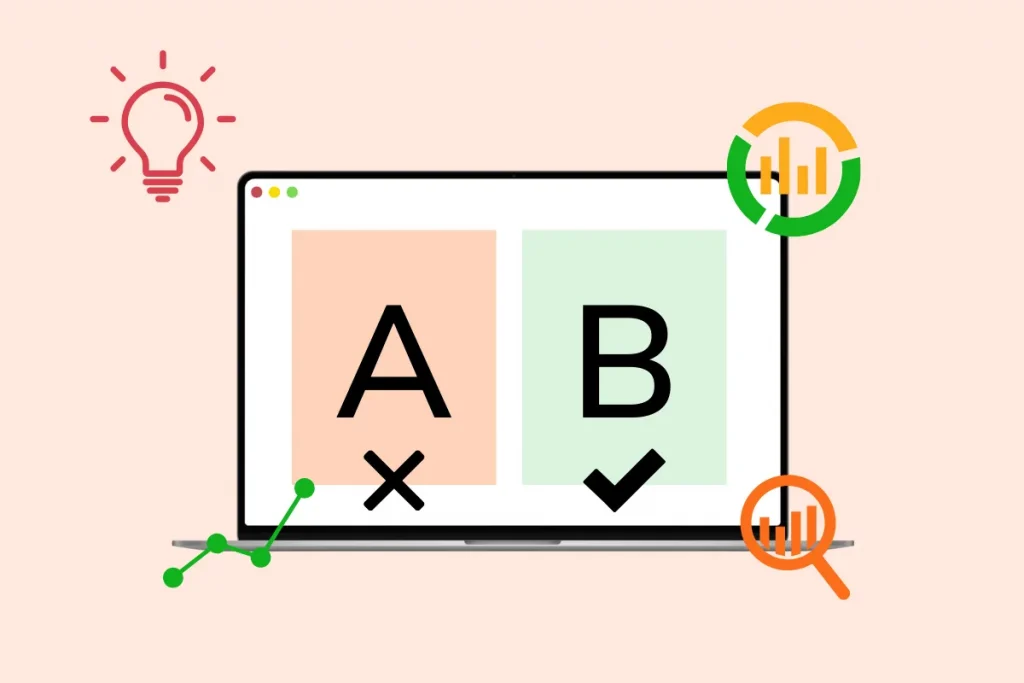
Discover how dynamic internal linking helps classified websites prevent SEO orphan pages.
Tips and best practices for optimizing website performance.
Discover how dynamic internal linking helps classified websites prevent SEO orphan pages.
Discover the benefits of static vs dynamic internal linking and how combining both can boost SEO, improve navigation, and scale your e-commerce strategy.
Learn how indexing filters and searchdexing can help you scale long-tail SEO traffic and boost performance for your e-commerce website.
Discover how A/B testing can be applied to SEO for large e-commerce, enabling data-driven decisions to boost rankings and conversions.
Strategically placing keywords in your page titles and URLs isn’t just basic SEO—it’s a game changer. Even subtle shifts can propel you ahead of your competition. Discover how.
Master the technical SEO intricacies for e-commerce. Dive into our comprehensive guide to optimize user experience, boost visibility, and foster trust.
Understanding how to optimize your pages with canonical URLs can greatly enhance your SEO efforts. In our latest blog post, we provide a clear guide on how to use canonical URLs effectively for better search engine visibility and ranking.
Website Architecture Tools – Our favorite 3 tools that will help you create SEO-friendly internal link architecture !
Grasping how Google crawls and indexes your website content is fundamental to SEO success. Our blog post demystifies this process, offering insights into Google’s mechanisms to help you optimize your site for better visibility and ranking.
Duplicate content is a major concern for content creators since it affects both a website’s traffic and its ranking on search engines. As a result, it can be harmful for any online platform.
Unlock the potential of your ecommerce site’s SEO. This article explores improving search engine crawlability through effective link structure, simplified site architecture, link silo implementation, and the use of XML sitemaps.
Discover the power of long-tail SEO and its impact on your website’s visibility. This blog explores the concept of long-tail SEO and its benefits for targeted keyword strategies. Learn how to leverage long-tail keywords to attract relevant organic traffic and boost your search engine rankings.
Driving traffic to a website is crucial, even if it’s well-designed. The page title plays a vital role in content creation, and optimizing it is essential. This article emphasizes the importance of a page title and provides insights on how to optimize it.
Structuring your ecommerce website for SEO is essential for online success. Learn the essential tips and techniques to optimize your website’s structure and improve search engine visibility
Discover five common technical SEO issues that can impact the search visibility of ecommerce websites. This article highlights the importance of migrating to HTTPS, ensuring proper indexing, configuring robots.txt file correctly, improving page load speed, and optimizing URL structure. Learn how to fix these issues to enhance your website’s performance and search rankings.
In this comprehensive guide to rich snippets, we’ll cover everything from A to Z. You’ll find out what they are, how they affect your site, how you can benefit from them and how to properly configure and test them.
There are plenty of ways to drive traffic to your store—but ranking high in the search engines is among the most powerful. A high ranking brings you buyer-ready traffic and instantly confers customer trust upon you, leading to huge revenue opportunities. But how do you know if your eCommerce website is optimized for the search engine bots? Let’s explore how to find out (and further optimize) in this post.
Most people think of keywords and backlinks when they talk about SEO. However, SEO algorithms are designed to reward websites with excellent user experience—and a big part of that is page speed. Think about it: You won’t stay on a website very long if it takes forever to load and it feels clunky. Google’s engineers know this, and so they designed the algorithms to prioritize page speed.
Discover the SEO-boosting power of HTML tags. From title tags to meta descriptions, learn how these 6 essential tags can improve your website’s visibility and help you rank better in search engine results.

















